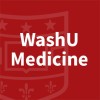
Cost-effectiveness of the Care Pathways
Diabete Type 2Substance AbuseIn this study we research patient segmentation made by Suuntima-service and it´s impacts to Quality of care, Service use and Costs of care among Type 2 Diabetes patients and Substance Abuse patients. With this Suuntima-servise based segmentation we assume to find appropriate services and Self-Management to allocate Type 2 Diabetes and Substance Abuse patients. We plan their care pathways by Suuntiman-service customership strategies (Self-acting, community, co-operation, network).

Organization-level Youth Engagement Approach for Substance Misuse Prevention
Drug UseSubstance Use2 morePhase 1 will consist of a small pilot Open Trial (OT). The objective of Phase 1 is to develop an organization-level YE prevention strategy and implement it in a community-based organization to test feasibility and acceptability in an open trial with one organization. This will include developing a manual for systematically incorporating YE into prevention efforts in community settings. Phase 2 will consist of a small pilot Randomized Controlled Trial (RCT). Four prevention organizations will be randomized either to include Youth Engagement in prevention efforts (treatment) or not (control). The study team will attempt to match the treatment and control groups on relevant characteristics such as geographic location (e.g., urban, rural), population served (e.g., church-based, school-based), and/or prior Youth Engagement involvement. The objective of the second phase of this study is to evaluate the preliminary effectiveness of Youth Engagement (YE) as a prevention strategy for opioid misuse in a small pilot randomized control trial (RCT). This pilot study will examine the effects of the YE prevention strategy on (a) organization-level outcomes, such as perceived value added to prevention programming and (b) individual-level outcomes such as personal skills and attitudes as well as knowledge and attitudes about substances including opioids. Up to 15 leaders/staff and 45 youth/young adults (60 people overall) will be recruited for the study.

Feasibility and Acceptability of a Telehealth Intervention Among Women With Perinatal Mental Health...
Perinatal DepressionPerinatal Anxiety2 moreThe goal of this pilot feasibility/acceptability study is to evaluate the effectiveness of a telehealth approach to increase access to services and reduce depression/anxiety symptoms and risk of substance use in a population of women with perinatal depression/anxiety and elevated substance use risk. The main questions it aims to answer are: Assess the acceptability and feasibility of a telehealth approach to deliver an 8-week evidence-based group intervention to women with perinatal depression/anxiety and mild to moderate substance use risk. Obtain preliminary data on treatment response to a telehealth 8-week evidence-based group intervention. Participants will participate in an 8-week evidence-based group intervention and complete the study questionnaire including depression severity, treatment adherence, and substance use risk which will be evaluated at baseline, post-intervention, and 2-month follow-up.

The Development of a Brief Parent-Child Substance Use Educational Intervention for Black Families...
Substance UseThe purpose of this study is to adapt a racial-specific parent-child substance use education intervention for Black families in Paterson and East Orange, New Jersey which can promote family bonding, communication, and supervision, as well as acknowledging racial and ethnic specific norms, values, and pride. The adaptation of this intervention will be designed based on the needs of Black parents and their children and direct input from them as stakeholders.

Transcranial Magnetic Stimulation in Substance Use Disorder Patients
Substance Use DisordersTo determine the effect of substance use disorder on cortical excitability using transcranial magnetic stimulation (TMS) , it's a scientific study

Assessing the Use of MY-RIDE, a Just-in-time Adaptive Intervention, to Improve HIV Prevention and...
HIV InfectionsThe purpose of this study is to determine whether Motivating Youth to Reduce Infections, Disconnections, and Emotion dysregulation (MY-RIDE) decreases substance use , to determine whether MY-RIDE increases human immunodeficiency virus (HIV) prevention strategies and to evaluate MY-RIDE effects on willingness to take Pre-Exposure Prophylaxis (PrEP), stress, substance use urge, and use of mental health and substance use services when compared to attention control youth

Preconception Intervention for Incarcerated Women With Substance Use
Substance Use DisordersThe goal of this pilot trial is to test the feasibility and acceptability as well as efficacy of the adapted intervention, CHOICES-PLEAS (Pregnancy Liberated from Exposure to Alcohol and Substances) among women will illicit polysubstance use participating in a court-mandated jail-based 90-day substance use disorder treatment program. The main questions it aims to answer are: What is the feasibility and acceptability of implementing the CHOICES-PLEAS intervention in a court-mandated jail-based substance use disorder treatment program? Does participation in CHOICES-PLEAS lower the risk of a substance exposed pregnancy at 1 and 3 months after release compared to a control condition? Does participation in CHOICES-PLEAS increase motivation to change substance use and reduce risky sexual behaviors at 1 and 3 months after release compared to a control condition? Participants will receive three one-on-one motivational interviewing sessions and one family planning referral visit during incarceration and one booster session at 1 month after release from jail. Researchers will compare the CHOICES-PLEAS intervention to a control condition to see if participation in the intervention reduces risk of substance exposed pregnancy, increases motivation to change substance use, and reduces risk of risky sexual behaviors.

Primary Connections for Youth and Families
Substance UseThe goal of this clinical trial is to compare a standard adolescent-only approach to substance use screening, brief intervention, and referral to treatment to a in primary care settings. Primary outcomes (AOD use, co-occurring behavior problems, parent-youth communication about AOD use) and secondary outcomes (adolescent quality of life, therapy attendance) are assessed at screen/initial and 3, 6, 9, and 12 months follow-up.

Assessing the Feasibility of Economic Approaches to Prevent Substance Abuse Among Adolescents
Adolescent DrinkingHIV/AIDS1 moreThe proposed study will test the impact of an economic empowerment intervention on reducing alcohol and drug use (ADU) among adolescents and youth living with HIV (AYLHIV) in poverty-impacted communities in Uganda. It focuses on improving understanding of multi-level context- specific risk and protective factors for ADU among AYLHIV.

Adaptation and Evaluation of Bright Horizons
Alcohol AbuseSubstance UseThis study will test if a program called 'Bright Horizons' is effective at reducing binge substance use among adolescents. Bright Horizons is a culturally adapted intervention developed and tested through a partnership between The White Mountain Apache Tribe and Johns Hopkins University. Bright Horizons is a brief intervention that teaches emotion regulation, coping skills, and problem solving. The intervention also uses goal setting to reduce alcohol and other substance use and to connect to individuals with treatment.
